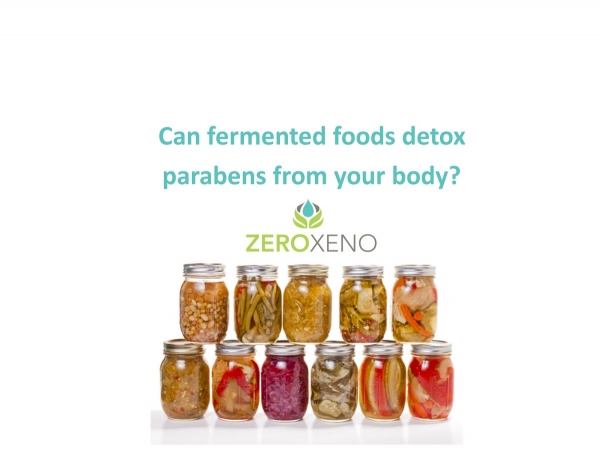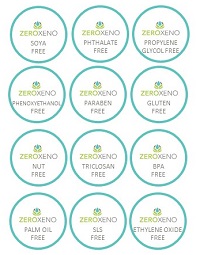Fermented Koji & Parabens - The Detox Connection
September 25, 2017

My love of fermented foods and the topic of xenoestrogens has led me to develop my paraben/koji detox hypothesis. Koji is a fermented rice that's been cultured with Aspergillus oryzae or 'koji fungus'. According the U.S. Environmental Protection Agency the koji fungus has been safely used in the food industry for several hundred years. If you're a fan of Asian food, you've probably consumed this fungus and not even known it. This infamous fungus is what makes shoyu (soy sauce), miso and saké (rice wine) so delicious and tasty!
Parabens (4-hydroxybenzoic acid esters) are preservatives and are known to have estrogen activity (EA) in your body through their xenoestrogen effect. Parabens are linked to breast cancer, reduced sperm quality, and both male and female infertility. You've likely been exposed to parabens because they're widely used in personal care products (which are easily absorbed through your skin), in drugs for infants and adults, as well as processed foods. There are 6 main parabens which begin with the prefixes methyl, butyl, propyl, ethyl, heptyl, benzyl.
Connecting the Dots
My hypothesized connection between parabens and koji fungus is simply that I believe "Specific enzymes found in koji fungus (Aspergillus oryzae M-4), can break down parabens so they are safely detoxified from the body." How did I come up with this hypothesis? As a child I loved coloring books that contained 'connect the dot' puzzles. I would spend hours buried in them. As an adult I love researching peer reviewed studies and connecting the dots between studies to see how they relate to each other and what picture they reveal in the end!
Coming back to the science of it all, parabens (esters of 4-hydroxybenzoic acid also known as p-hydroxybenzoic acid) are chemically related to 3-phenoxybenzoic acid in that they both are derived from benzoic acid. 3-phenoxybenzoic acid is a phenolic that is generated from phenol compounded with benzoic acid. Parabens are esters of benzoic acid, thus the name 'para + ben' (para = alongside, ben = benzoic acid). Benzoic acid is a "compound comprising a benzene ring core carrying a carboxylic acid substitute." The long and short of it, is that parabens and 3-phenoxybenzoic acid both contain benzoic acid and are likely to be detoxified (my hypothesis) through similar mechanisms.
A 2016 study in the Journal of Applied Microbiology and Biotechnology discovered that the amazing fungus Aspergillus oryzae (koji fungus, also known as M-4) found in soya sauce can degrade (break down/detoxify) 3-phenoxybenzoic acid."M-4 could degrade 80.62% of 3-phenoxybenzoic acid in 5 days... without toxic effects." A related paper in the Journal of PLoS One found similar results as did a 2020 study.
It's also interesting to note that laccase enzymes have been shown to remove the estrogenic activity of several parabens and Aspergillus oryzae (koji fungus/M4) is known to produce laccase enzymes. Lastly, in a 2010 study, a protein (enzyme) from Aspergillus oryzae showed "hydrolytic activity toward the ethyl, propyl, or butyl esters of 4-hydroxybenzoic acid" (parabens). Hydrolytic enzymes break down protein, lipids, nucleic acids, carbohydrate and fat molecules into their simplest units. To summarize, the end picture my dot connecting is; if you consume foods fermented by the koji fungus you'll likely be providing your body with the needed enzymes required to hydrolyze (break down/detox) parabens.
Whether you believe my hypothesis is true or not, fermented foods are always a healthy choice. In fact a 2016 study reports that Japanese traditional dietary fungus koji Aspergillus oryzae might be the missing connection between Japanese cuisine and longevity.
More Deliciousness
So what other foods are fermented with this wonderful ancient fungus? Studies show that barley koji has higher enzyme activity than rice koji. The beverage koji amazake (sweet rice drink) naturally contains acetylcholine, a well-known beneficial neurotransmitter. Kochujang, a traditional fermented red pepper paste, is renowned for its cholesterol lowering effects.
Connecting all the dots really just leads back to the realization that the ancients of long ago had it all figured out. Thanks again grandma!
Join The Zero Xeno Movement today!

by Bonnie Penner
All Zero Xeno (ZX Enterprises Inc.) products are for external use only. All advice and information posted on this website is from personal research and/or experience and is intended for general educational purposes. Our intent is not to diagnose, treat, cure or prevent any disease. The information on our site is not intended to be a substitute for professional medical advice related to specific medical conditions. We cannot diagnose illnesses nor confirm any claim as to therapeutic safety, effectiveness or course of treatment. Always seek the advice of your physician or other qualified health professionals for any concerns regarding your health. Only your physician can provide specific diagnosis and treatments. Please refer to our full Disclaimer for more details.
- Log in to post comments



